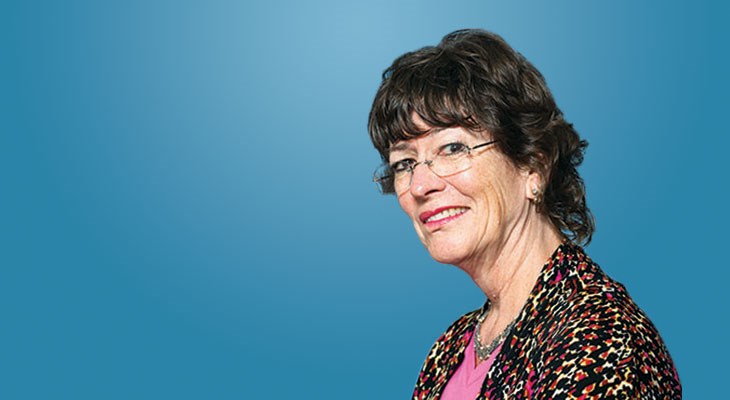Babs Carryer likes to give University of Pittsburgh students tough love.
The director of the Big Idea Center, Pitt’s 18-month-old hub for student entrepreneurship, says it takes more than a great idea. First-time entrepreneurs have to look at their market, customers and business model. They cannot bypass those steps because it often leads them to pivot or morph their idea into something that’s more focused and what the market really wants and needs.
“They need help and they need support and they need encouragement, but more than encouragement, they need pushback,” Carryer says. “They don’t need somebody to say, ‘Oh, that’s a great idea. Great job.’ They need somebody to say, ‘Well, what’s the competition? How many other things are like that? How do people solve that problem today?’”
Like many of her colleagues at Pitt’s Innovation Institute, Carryer is a former serial entrepreneur. In addition, she’s managed entrepreneurial programs at Carnegie Mellon University, helped companies and startups grow as the president of Carryer Consulting, and is the co-founder of LaunchCyte, which has a portfolio of five companies that have commercialized university technologies.
Here’s what Carryer had to say about Pittsburgh’s startup ecosystem, raising capital and the Big Idea Center.
What do you think are Pittsburgh’s biggest barriers to innovation and entrepreneurship?
There’s an inherent challenge, where people are afraid to take risks. They’re afraid of being entrepreneurs in the first place.
I think that diversity and inclusion is another barrier. There’s not a lot of models and they don’t roll off the tongue quite as easily, as Mark Zuckerberg and Sergey Brin, who are white males.
You didn’t mention funding?
I don’t actually think a lack of capital is the biggest challenge. I do think Pittsburgh has some talent issues. We’ve a very small community and we’re very isolated.
One of the reasons why Silicon Valley is successful was the proximity. You’ve got Palo Alto, Mountain View, San Jose and San Francisco. Traffic, of course, is terrible, but they’re all in proximity. They’re within a 30-mile radius. We don’t have anything within 30 miles of Pittsburgh. Our nearest city is Cleveland.
We have a lot of great support for early-stage entrepreneurs. We’ve got, obviously, the universities, and then we have Idea Foundry, Innovation Works, AlphaLab, AlphaLab Gear, Ascender and a number of organizations. There’s lots of groups. There’s Biomedical Breakfast, startup clubs and meetups.
What we don’t have is a lot of cashed-out entrepreneurs. When you go to Boston, that’s what you have. You’ve got a bunch of people that are looking for their next thing. We might have one or two of those, but in Boston you’ll have lots.
What are the misconceptions about raising capital?
It sounds sexy to go out and raise angel money. As somebody who’s actually raised a lot of money, it is hell on earth. It is not fun and it is not easy.
Investors: Some of them are awesome and some of them are not, so you have to really know what you’re doing. There’s a lot of preparation that goes into making your company investment-worthy.
When I started at Pitt six years ago, I had an undergraduate student who really wanted to be involved in innovation and entrepreneurship. He graduated, formed a company and worked hard to try to raise money. It was a very interesting, innovative idea that now is very successful, but he was not successful at raising money. He lost a lot of time and energy and focus. When he just bootstrapped it for years and really built a business out of it and figured it out, then investors came to him. He closed on slightly more than $1 million fairly recently — but five years in. It took him like four years to figure out his business, and that’s not an atypical story.
What are some results when students go through your programs?
I’ve seen students spend a couple of years working on their idea, pivoting through a bunch of ramifications of it, and eventually they graduate and do their startup.
A number of students don’t go off and start their own companies, at least not right away. They get jobs in existing companies and they often end up working in the innovation group where they’re trying to, whatever the field is, come up with new products and services for those companies.
I had a call about a week ago with the head of Honda’s innovation group who’s interested in what are students thinking about transportation. One of our students got a job in that group and made the introduction and facilitated setting up the phone call.
Anecdotally, many students, over the years, say, “In my interview, the recruiter or the employer asked all about the competition or all about the accelerator.”
At the Big Idea Center, do you go to students or do they come to you?
It’s a bit of both. If a student has an innovative idea, they’ll tend to find us — they might talk to their faculty member or another student who refers them to us, or they might see a poster. If they’re entrepreneurially inclined, they’ll generally find us.
But a lot of students don’t know that they’re entrepreneurs, because they don’t really know what that is. So, we push out to them by marketing to students and letting advisers know who we are, what we do and how that benefits students. We have a robust mailing list, and word-of-mouth on campus for our events.
If I relied only on the inflow, only on the students that knew that they were predisposed for innovation and entrepreneurship, it would be a very small program. It would be good, but it would be a very small program. Through our outreach efforts, we end up with a couple thousand students-plus, on an annual basis, running through our programs. And that’s been growing every year.




